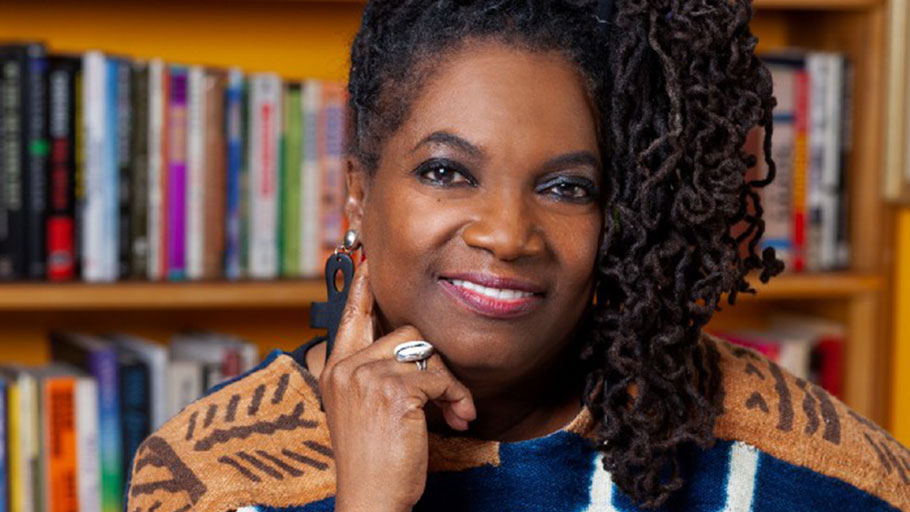To say I was an “interesting” teenager is an understatement. Once upon a revolutionary time, I was a Black Power teen who lived in the once Chocolate City but went to an all-white, all girl high school. I hung out, however, with Black Panthers and brothers from the Nam, recited poetry, attended organizing meetings for the first U.S.-based African Liberation Day, and celebrated Kwanzaa. And upon my high school graduation, I couldn’t wait to join my parents’ alma mater, Howard University. Like many Howard students today who went to predominately white high schools, I hungered for an all-Black and also, in my case, co-ed, environment.
In my mind, there was never a question that this young rapper before there was rap, would attend Howard. Yes, growing up the school had a reputation in D.C. (that’s where Black folk lived, not “the nation’s capital”) for being bougie; it was part of a reputation Black D.C. had that was so old that my fellow wordsmith Langston Hughes wrote about it for Opportunity magazine in 1927 in an article called “”Our Wonderful Society, Washington” at the height of the Harlem Renaissance. But so what? It was melanin-rich and I was craving chocolate!
I got more than just a flavor, though: I received groundings with and from Black sisters that remain with me today.
When I arrived on campus in 1973, the university was in-between student revolutions. In 1968, the school’s rebellious spirit was punctuated by the four-day takeover of the Administration building by over 2,000 students. That struggle — for Howard to be more Africentric and more responsive to the needs of the Black community in the District and elsewhere — was well-documented in an episode of the second season of Eyes on the Prize. I felt a little cheated that things were now “back to normal,” so to speak, but I remained ever ready for revolution!
Although a native Washingtonian, my parents let me live on campus. As a young Black woman craving to wrap myself into the symbolism that Howard provides in abundance, I was immediately at home: my first housing assignment was Truth Hall, part of the Harriet Tubman Quadrangle. (My mother had been assigned there when she attended 30 years earlier, so I had my pick of footsteps to follow.) The Quad housed several women’s dormitories named after four inspiring Black female leaders — Sojourner Truth, Prudence Crandall, Phyllis Wheatley and Julia S. Caldwell-Frazier.
I was surrounded by examples of Black female excellence. In my first year, my roommate was Margo Smith, a serious student with a pleasant personality, intent on going to medical school. She is now a celebrated physician. I met Adjoa Deborah Jackson my second year; we vibed immediately and were great roomies in Crandall Hall. She’s an amazing artist now.
There were other sisters in the Quad with which I would form great bonds. Young women such as Geri Allen, then an aspiring pianist who later became a jazz musician, and close friends Ayanna Barbara Murphy and Macharia Louise Cook. We all spent many evenings in the dorm’s Social Room just hanging out, rapping about community and world events. Unfortunately, Geri and Macharia, two of the triumvirate, are now part of the Ancestral realm.
Such experiences are no doubt normal and formative for so many Black women attending historically Black colleges and universities. At times Geri sat at the piano strumming out jazz tunes, while other times she was composing music to my Black love and struggle poems. Ayanna and I strum poetry together and Macharia and I worked together in the Black Woman’s United Front, helping to bring culturally relevant programming into Lorton Reformatory, which at that time housed D.C.’s prisoners.
I spent my last two college years living at Meridian Hill, one of Howard’s off-campus residence halls. It was across the street from my favorite hangout, Malcolm X Park. I was at home within home.
My world was always a Black one, and now, spurred by Howard, the cultural and political environment I had found in the community while still a high school student not only expanded but deepened. I loved Black books, Black arts and Black plays, and my love for all three grew exponentially during this time. My community had now extended into my maturing college life; I saw how community was linked by geography, experience and commitment.
One of the great things at Howard I loved was that I had the honor of having Black professors, particularly Black female professors. I idolized Esther Vassar, my English teacher. She appeared to me to be socially conscious, visually and in content. She wore her hair natural when she was not wearing an African headwrap. In the early-to-mid-70s, the Afro and the headwrap were ways to show combo of cultural, political and social ideas.
I reveled in writing papers for her class. One of my favorites was “Black Love Is Black Wealth: Nikki Giovanni and Her Works.” Professor Vassar loved it as well, commenting in the margins, “Excellent! I’m happy I taught you English 02 and 03!”
(Later, I would hear and read about Ta-Nehishi Coates’ experiences with Howard professors such as history master Dr. Edna Medford. I definitely related. Over the decades so many Howard grads have stories about how a Howard professor challenged them, pushed them toward greatness.)
On campus: I became a member of Black Literary Artists of Creative Kingdoms (B.L.A.C.K., yep, that’s how clear we were back then), founded by master storyteller Lorenzo Lord Callender. The writing class I signed up for was taught by Haki Madhubuti, a master poet I knew from the Black independent school movement that I had become deeply involved in by that time. Madhubuti has kept his book publishing company, Third World Press, and his African inspired schools going for more than half-a-century now.
One of my girlfriends, Denise Rolark, was in the same class. A daughter of a well-known Black newspaper publisher, Calvin Rolark, we went to junior high together. But now we had grown into ourselves: she did a thoroughly researched presentation on the history of the Black press, while I presented on my beloved Black independent schools movement. Now Denise Rolark Barnes has taken over from her father and has become a major player in the press and the D.C. Black community.
Off campus: At the D.C. Black Repertory Théâtre, one of the D.C.’s institutions I became familiar with, I saw and fell in love with plays such as “Changes” by Motojicho. The play’s vocal director was Bernice Reagon, who would later found my favorite a’capella group Sweet Honey in the Rock. I was enthralled by productions such as “Sister Elena’s Got the Gift,” by Joann Bruno. My love for Black plays is as strong now as it was then.
There are so many Black women to remember, so many to honor, in and outside Howard. But as an African-centered womanist, what I remember most from that period was how Black women and Black men were on one accord, ready to work together to build a Black nation. For one moment in time — my moment — D.C. became the community commonwealth we had dreamed about, the “CC” George Clinton had rapped/sung about. “To The Capitol.” We were revolutionizing during the day and, as Donald Byrd and the Blackbyrds sang, doin’ it after dark in Rock Creek Park. In D.C., although not a state, we were in a state of unity.
I felt back then a kind of freedom that can only happen when you find that in which you have searched. Although today an activist, movement lawyer, I will never forget the early influence of my HBCU and the sisters that were part of that phenomenal experience.
Source: MEDIUM















